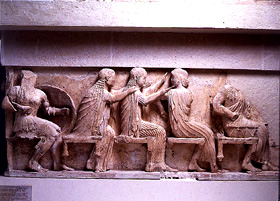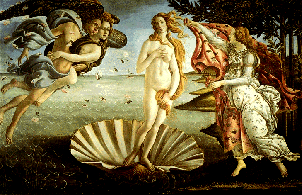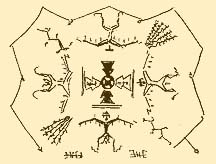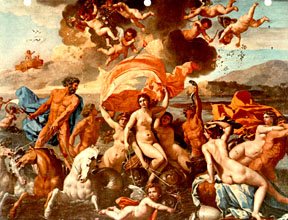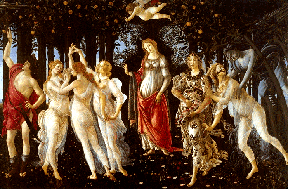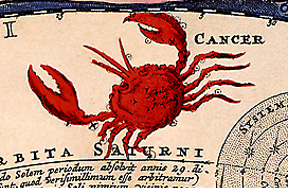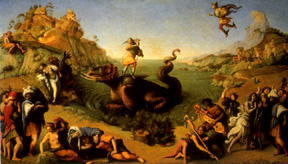Click on image for full size
Image courtesy of the Superintendency (Ephoria) of Prehistoric and Classical Antiquities in Delphi. Greek Ministry of Culture-Archaeological Receipt Fund.
Related links:
Aphrodite
Aphrodite was the Greek goddess of love and beauty. She was known to the Romans as Venus. There were actually two different Aphrodites, one was the daughter of Uranus, the other the daughter of Zeus and Dione. The first, called Aphrodite Urania, was the goddess of spiritual love. The second, Aphrodite Pandemos, was the goddess of physical attraction. Aphrodite is the more famous of the two.
Aphrodite Pandemos could be both very kind and cruel. One story in particular concerns Pygmalion. The women of Cyprus defied Aphrodite, and so she made them all prostitutes. This sickened Pygmalion, and so he decided to create his own lover. He formed a woman out of ivory, and loved her as if she was his wife. One day Aphrodite heard the prayers of Pygmalion, and she brought the ivory statue to life. She watched as they became happily married.
In a separate story, Aphrodite fell in love with Adonis, a beautiful god that was also a hunter. Adonis was once hunting a wild boar, but his arrow did not kill the animal. The boar raced after Adonis, and killed him. Aphrodite mourned her lost love, and a flower grew from nectar she sprinkled on his blood.
Aphrodite often boasted about her powers to make all gods fall in love with mortals. Zeus was angry because she considered herself better than other gods and goddesses because she had not slept with any humans. Zeus made Aphrodite fall in love with Anchises, preventing her from further bragging.


